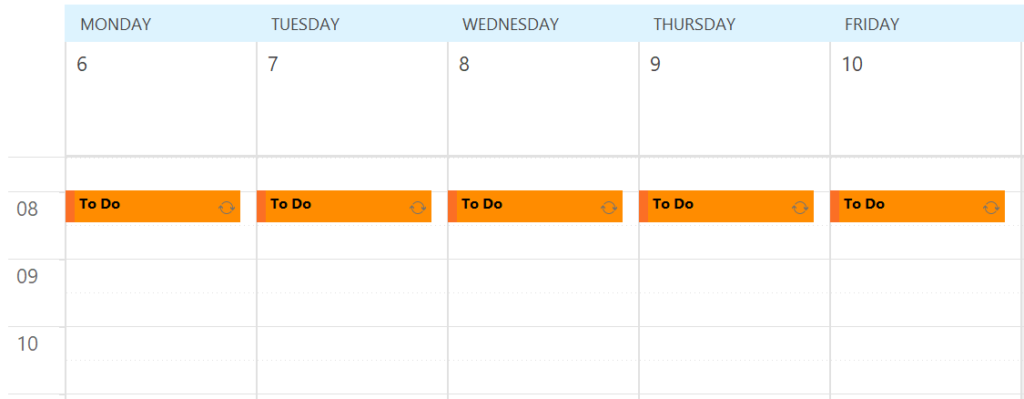Have you ever felt lost with the numerous tasks you have to achieve in a day? Have you ever been flooded by an unmanageable “to do” list?
If you feel frustrated by not being organised as you want to be, this article is for you. I will explain to you how in 5 minutes per day I manage successfully my full-time MBA courses at Imperial College London together with my extra curriculum activities such as being a Student Ambassador, assuming the vice-presidency of a business coaching program within Imperial College, writing articles and working part-time on top of everything with a start-up called The Aviary Project.
I suggest a practical approach based on 5 steps: Understand, check, organise, record and achieve. This methodology will be illustrated with mini-exercises through examples under the “Try it!” section. I recommend to try and apply the suggested actions to instantly improve your time management. You may also enjoy my other article, 4 best tools for a perfect To Do list, that goes into depth about the many ways of creating a to do list which can be paired with the methods discussed below.

Step 1: Understand
Understanding the task or project you have to perform is essential to be a well organised professional. When undertaking a new project, carefully review all given information. Ask any questions needed to clarify the expected outcomes and deadlines.
In general, try to estimate the time needed, break down the project in small tasks with their related deadlines and identify the relevant variables to complete the action such as people involved or resources needed. If you do not know the answer, ask for more clarity from colleagues or friends.
==> Try it!: You are asked to deliver a report to a client including your recommendations regarding its procurement processes, what are the key aspects to understand to organise your time? Try to list your own questions you would like to ask. Here is my top 3:
- Do you understand the amount of work required?
- Do you know when the report is due?
- Are there any variables that could significantly impact the time needed?
Step 2: Verify
Now that you have assessed the time duration and resources required for the project, you must identify in your calendar if you have enough time and resources to accomplish this objective. If not, you will have to reorganise your agenda to accommodate this new project (see step 3). Take this step very seriously as some of us have a bad habit to always say yes to new tasks without taking the time to organise their calendar and consequently being overwhelmed by things to do. Remember that being able to say “No” is a strength, not a weakness!

Step 3: Organise
Before recording the project in your agenda, make sure that the way you structure your tasks is adequate. I recommend the use of two very simple tools. First, book 5 minutes in your calendar every day, preferably in the morning when you arrive at your office, to organise your work. As shown below, I use a recurring meeting of 5 minutes in my calendar to ensure that I do not forget. My advice is to use a specific colour for your agenda reminders requiring actions so that you do not confuse with your meetings.

Second, use the Eisenhower Matrix, which is based on the former US President’s decision process, with 2 variables being “is the task urgent?” and “is the task important?”. This matrix will help you prioritize each task and take the appropriate action shown in italic.

Make sure to prioritize the top right tasks, find some time for the bottom right items, delegate or postpone the top left items and delete the bottom left tasks.
I would add a personal note on this matrix: Try to consider external variables that could significantly impact the time needed for a task. Combining several tasks may on average drastically decrease the time needed to perform each one of them. Factors such as commute time, efforts to start an action (for example looking up for files in the archives), or the availability of others involved in your project may impact your task ranking.
==> Try it!: Let’s say that our report is due in a month and you will need 5 days to write it, representing 5*8hours = 40 hours. We assume that you do not have enough time in your agenda to deal with it. Therefore, how will you organise your time? Think about how you would do this now and compare with the methodology proposed in the further steps. Here is my advice:
- Even if you have enough time, do not dismiss the next steps.
- Consider that you might receive additional work later more urgent than the one you are considering.
==> Try it!: Insert in your calendar a meeting of 5 minutes every morning requiring you to organise your work. Next, take a sheet of paper, draw the matrix and write down all the things you need to do. You might want to have another matrix for your personal tasks. Now that you organised your work, have you ever had a real overview of all your “to do’s”? How useful is it? Are you already able to see any better ways to reorganise your work? If I refer to the report example, we can consider this is important but not that urgent.
Step 4: Record
To record your tasks and make sure you do not miss anything when you are out of your office or on the road, refer to the supplement of this article discussing the 4 tools I use to never forget any actions expected from me. I will explain here how to have a perfectly organised calendar to make your life easier at work. First, you need to identify the tasks from the matrix you need to delete. Second, try to delegate or push back the urgent but not important tasks. Third, you have now freed up your calendar to the maximum you could. Schedule your most important and urgent tasks and then fill any available time with your important but not urgent tasks.
==> Try it!: Open your calendar and start reorganising it as described above. Have you seen the difference? Do you feel more confident in dealing with your “to do’s”? Regarding the example of the report, you will want to book timeslots in your calendar from now up to one month to make sure you have at least 40 hours of work.
Step 5: Achieve and repeat
Your calendar is now efficiently organised, you have optimized your time for each day, well done! Now you just need to achieve the tasks in the order defined. Do not forget to delete the items in your “to do” list once done. Steps 3, 4 and 5 need to be performed repetitively on a frequent basis (I recommend daily).

To conclude, I suggest you see this methodology as a process where steps 1 and 2 are your input and step 3 to 5 are the mechanism helping you to get complete the maximum number of tasks you can in the best efficient time possible. The proposed approach is very personal, and I invite you to share your own way of organising your schedule in the comment section below to help others be as efficient as possible.

